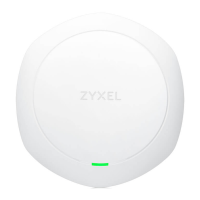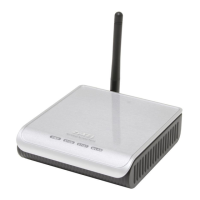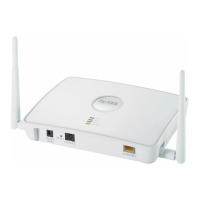Chapter 9 Maintenance
HES-309M Series User’s Guide
115
• Set - Allows the manager to set values for object variables within an agent.
• Trap - Used by the agent to inform the manager of some events.
The WiMAX Device sends traps to the SNMP manager when any of the following
events occurs:
OMA-DM
When the WiMAX Device initiates communication with the server (often times at
start up or after the first time you turn it on), the server uploads commands, new
files (if any), and other information used by a service provider to customize the
WiMAX Device’s features.
Device management works as follows:
1 The server (A) sends out the query (1) to the WiMAX Device (B).
2 The WiMAX Device responds by sending back its credentials (2), to which the
server responds with its credentials along with a string of management operations
(3).
3 The client responds to the management operations (4), perhaps confirming file
alterations or confirming receipt of file uploads and so on.
Table 40 SNMP Traps
TRAP #
TRAP NAME DESCRIPTION
0 coldStart (defined in RFC-
1215)
A trap is sent after booting (power on).
1 warmStart (defined in RFC-
1215)
A trap is sent after booting (software reboot).
4 authenticationFailure (defined
in RFC-1215)
A trap is sent to the manager when receiving
any SNMP get or set requirements with the
wrong community (password).
6 whyReboot (defined in ZYXEL-
MIB)
A trap is sent with the reason of restart before
rebooting when the system is going to restart
(warm start).
6a For intentional reboot: A trap is sent with the message "System reboot
by user!" if reboot is done intentionally, (for
example, download new files, CI command "sys
reboot", etc.).
6b For fatal error: A trap is sent with the message of the fatal
code if the system reboots because of fatal
errors.

